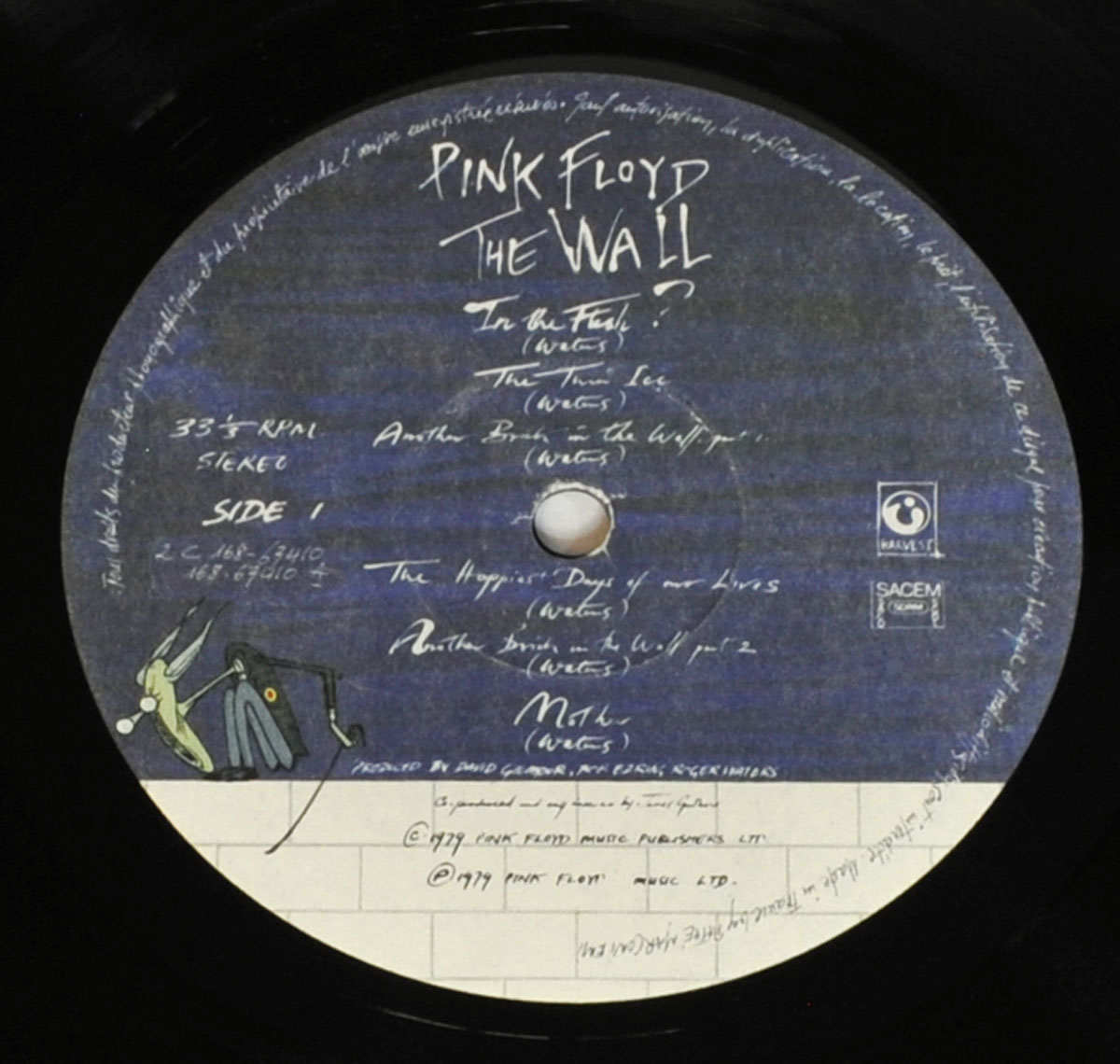 |
| Side 1 |
As a double LP, The Wall has a four-side structure, laid out across two vinyl records which physically demand to be turned and changed. The official structure, as indicated in the vinyl record, goes as follows:
Side 1:
In The Flesh?
The Thin Ice
Another Brick in the Wall, Part 1
The Happiest Days of Our Lives
Another Brick in the Wall, Part 2
Mother
Side 2:
Goodbye Blue Sky
Empty Spaces
Young Lust
One of My Turns
Don't Leave Me Now
Another Brick in the Wall, Part 3
Goodbye Cruel World
Side 3:
Hey You
Is There Anybody Out There?
Nobody Home
Vera
Bring the Boys Back Home
Comfortably Numb
Side 4:
The Show Must Go On
In the Flesh
Run Like Hell
Waiting for the Worms
Stop
The Trial
Outside the Wall
Now what? Well: what does the track listing itself say, the fore-structuring of our experience of The Wall?
I should think the obvious answer is that of the question-answer structure, or perhaps more aptly, the seeming dialectical structure of the album. That is: There is, seemingly, a rhyme and reason to the tracks on the album and their ordering. In The Flesh is posed first as a question on Side 1, and then, seemingly, answered on Side 4. Much the same self-referential structure is seen on Side 2, beginning with Goodbye Blue Sky and Goodbye Cruel World. Little can of course be known of any of the meaning of this, but something can be known: From the track listing itself, the Albums certainly claims to "make sense", to have a kind of continuity, to be coherent. Coherence, then, is assumed on approaching The Wall, and indeed ought to be. Consider the first three tracks off Side 3 as well, which show a similar sort of structure: "Hey You", answered by "Is There Anybody Out There?", which in turn is answered "Nobody Home". Which is as much as to say that the structure of The Wall does not simply appear "dialectical" in some abstract sense, but in the literal sense of the origins of the term in διαλεκτικός - in that which relates to dialogue. This is the structure apparent in The Wall from its track listing - that of a conversation.
Certain thematic clues are given too - Mother on Side 1, Young Lust on Side 2, Bring the Boys Back Home on Side 3 and The Trial on Side 4 all seem to treat rather different topics. Not to say that no overlap can be expected, but this is then the more dialectical side of the conversation had, namely that of a development, something also to be expected.
Most interesting of all, perhaps, is, however, the Wall itself - its bricks on Sides 1 and 2, and the outside of it on Side 4. Yet the content of the Wall itself remains unknown, yet to be discovered. A promise, however, seems implicit already: That throughout The Wall, we will get to know it and what it means.
The analysis of The Wall, in turn, will begin with an analysis of its first dialectical moment, namely the question of the first track, "In The Flesh?", the question which will launch us into the whole of The Wall, but, interestingly, a question without semantics.